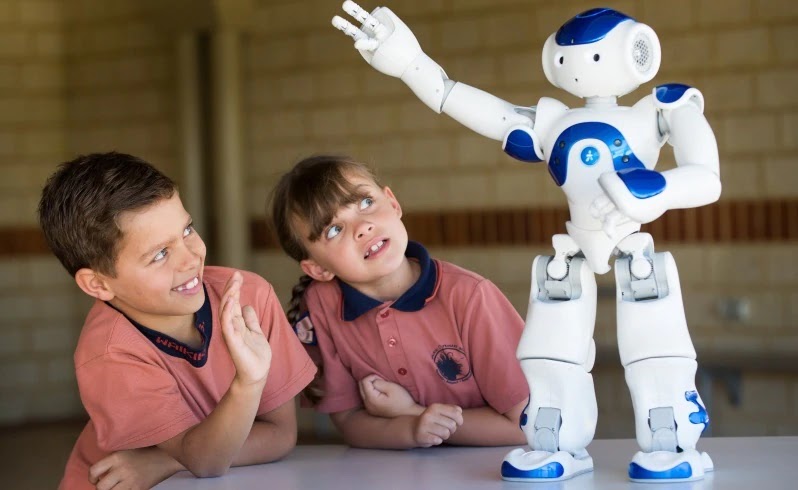
By: Rabab Zehra
Artificial Intelligence, now being an integral part of 21st-century evolution has started impacting the education sector globally. Most of us might not know that the very first robot using AI was introduced in a classroom during 1974. The name of the robot was Leachim and it was created by Michael J. Freeman.
As of now, there are several schools around the world that have already started using robotics technology in classrooms.
Already knowing that technology is going to make greater things possible in the future, it is now more important than ever to prepare our children for the future. Allowing the use of robots in classrooms will support an educator and learner both in multiple ways.
Key benefits of integrating robots as educators in the educational system
Assign repetitive tasks to robots:
In the modern education system, a teacher spends most of his/her time in repetitive tasks like maintaining files, organizing classrooms, repeating the instructions, etc. By introducing robots in schoolrooms, all the mentioned monotonous and repetitive tasks can be assigned to robots and the teacher will be able to invest more time on students, thereby increasing productivity and efficiency.
Boost the learners’ energies:
Children are considered to be high on energies most of the time during the day and each classroom will have some difficult to handle situations. Extra manpower is definitely required to keep them engaged and utilize their energies in a positive way. A precisely programmed robot can help an educator in effectively handling these children by playing the role of an assistant teacher.
The observation of a child’s activities by a robot’s point of view will also help the teacher in noticing the child’s behavior, capabilities, strengths, and weaknesses.
Prepare children for the future:
To realize the potential in students about their interest in robotics, it is vital to introduce robotics as a subject in educational institutes. Robotics will surely be an integral part of the future and it is very important for students to be familiarized with the concept.
Robot teachers for special needs students:
A robot, specifically programmed to suit the needs of special children can benefit its learners in endless ways. Visually impaired children can be supported by a font changing tool programmed in specially designed robots. Autistic children can be helped in communication. Also, those children who suffer from attention disorders can learn to focus if they are accompanied by robots during their learning hours.
School at home:
Video conferencing system programmed in robots can also create an interactive school-like environment at home. For any reason, if a child is missing school but would still like to be updated and continue learning, this is a great feature.
The above factors play a vital role in maximizing benefits for both, the educator and the learner. However, it needs to be ensured that this very modern AI technology is used in the most productive way.